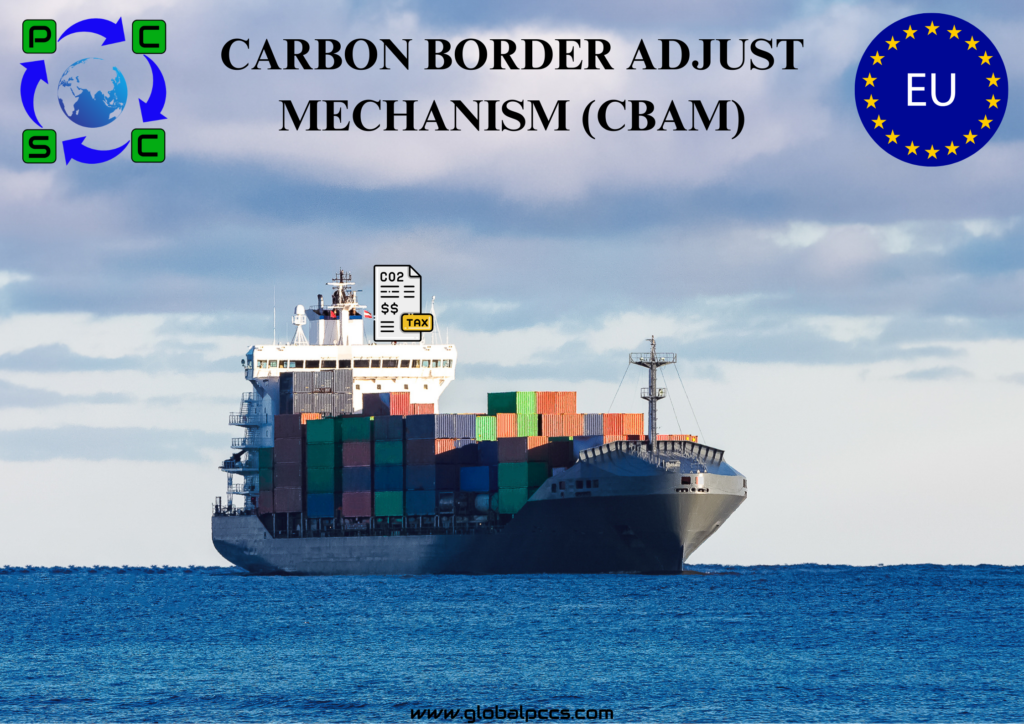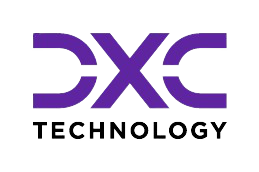 Last October, the European Union (EU) implemented the Carbon Border Adjustment system (CBAM), initiating a two-year transitional period during which importers of commodities covered by the system with EU bases would have to declare the embedded carbon emissions of their imports. Beginning in 2026, import items would be subject to a fee at European borders depending on their environmental footprint, with the carbon price being incorporated throughout the production process.
Last October, the European Union (EU) implemented the Carbon Border Adjustment system (CBAM), initiating a two-year transitional period during which importers of commodities covered by the system with EU bases would have to declare the embedded carbon emissions of their imports. Beginning in 2026, import items would be subject to a fee at European borders depending on their environmental footprint, with the carbon price being incorporated throughout the production process.
The EU’s adoption of the Emissions Trading System (ETS) in 2005 marked the beginning of the CBAM, which was the first of its sort globally. By enabling emitters to purchase and sell these emissions among themselves, the ETS is a market-based system designed to reduce greenhouse gas (GHG) emissions. Under this system, there are annual emission limitations, and emissions permits are sold within these caps.
Although this method serves the country’s industries effectively, it does not account for emissions that are incorporated into goods that are imported. The European Union was concerned that if emissions are not taxed as heavily in the nations where the imported items originated, this would harm its own producers. Initially, the EU tried to allay this fear by granting free allowances or licenses under the ETS to the most carbon-intensive companies within the EU.
EU CBAM TIMELINE

Like many other businesses worldwide, many Europeans in carbon-intensive sectors have an innate tendency to move their carbon-intensive output to nations with laxer climate regulations; this phenomena is known as carbon leakage.
In order to successfully globalize its climate policy, the EU implemented its CBAM measures to solve these issues and strengthen the EU ETS.
The objectives of the Carbon Border Adjustment Mechanism (CBAM) proposed by the European Union (EU) are multifaceted and primarily aimed at addressing climate change, ensuring a level playing field for industries, and preventing carbon leakage.
Here are the main objectives:
- Addressing Climate Change: The primary objective of CBAM is to contribute to the EU’s climate goals by incentivizing industries to reduce their greenhouse gas emissions. By imposing tariffs on imports from countries with less stringent carbon pricing policies, CBAM aims to encourage global trading partners to adopt similar climate policies and reduce their carbon emissions.
- Preventing Carbon Leakage: Carbon leakage refers to the situation where companies move production to countries with laxer environmental regulations to avoid carbon pricing measures in their home country, resulting in a net increase in global emissions. CBAM aims to prevent carbon leakage by imposing tariffs on imports from countries with lower carbon pricing or weaker climate policies, thereby maintaining the competitiveness of EU industries while ensuring they remain subject to carbon pricing.
- Levelling the Playing Field: CBAM seeks to create a level playing field for EU industries by ensuring that imported products are subject to the same carbon pricing mechanisms as those produced domestically. This helps prevent unfair competition from countries with lower environmental standards and encourages a global transition to low-carbon production methods.
- Promoting Fair Trade: CBAM aims to promote fair and sustainable trade by encouraging trading partners to adopt climate-friendly policies and practices. By aligning trade with climate objectives, CBAM contributes to the creation of a more sustainable and environmentally responsible global economy.
Overall, the objectives of CBAM are closely aligned with the EU’s broader climate and environmental objectives, including reducing greenhouse gas emissions, promoting sustainable development, and fostering global cooperation on climate action. By addressing carbon leakage and promoting fair competition, CBAM aims to support the transition to a low-carbon economy while ensuring the competitiveness of EU industries in the global marketplace.
Mandatory registration
As of 1 January 2026, only registered declarants will be allowed to import CBAM goods. Customs officials in EU member states are required to keep an eye on the flow of products and to refuse imports of CBAM items from unregistered declarants. Beginning on January 1, 2025, importers who must comply with this registration requirement may request authorization.
Decoding CBAM:

How will it work?
Initially, six carbon-intensive industries—cement, iron and steel, aluminium, fertilizers, power, and hydrogen—that are also thought to be more vulnerable to carbon leakage would be covered by the system. Beginning in October 2023, importers in certain sectors will be subject to a trial period during which they will only be required to report the direct and indirect greenhouse gas emissions (GHG) stored in their imports; no further payments or adjustments would be required.
Beginning on January 1, 2026, importers will have to report annually how much was imported into the EU the year before, together with any associated greenhouse gas emissions, and then turn in the appropriate number of CBAM certificates. The weekly average auction price of EU ETS permits, expressed in euros (EUR) per metric ton of carbon dioxide released, will serve as the basis for determining the cost of these certificates.
Default emission data will be used if suppliers are unable to give EU importers the required emissions data at the standard that the EU requires. The European Council will mark up CBAM certificates when default factors are used, therefore it may be more expensive to utilize default factors than main data. The producer economy’s lowest-performing production assets will serve as the basis for the default factors. Economies who do not gather this amount of data should be concerned about this provision since it will prevent them from providing reliable CBAM reporting based on their unique suppliers and assets.
Impact on trade flows and economy:
Impact on Europe:
The CBAM regulations will impact import and export trade flows in Europe. The export competitiveness of European downstream sectors will be impacted by the eventual removal of free allowances. The impact on imports will mostly rely on how carbon-intensive the trading partners of the European Union are, whether or not they have significant policies in place to promote decarbonization in their sectors, and how soon they can achieve this.
Prices will rise for consumers in Europe as imports get more costly. The phase-in of CBAM would increase costs for EU producers as free concessions to domestic industries are gradually decreased.
Impact on trading partners:
Exporting nations, especially those in emerging and developing economies, may find it more difficult to compete with the EU as a result of the CBAM. A nation’s exposure to the CBAM, or the amount of its impacted exports to the EU, is determined by the price of the EU ETS, the severity of the CBAM’s impact, and exporting nations’ exposure.
On the other hand, exposure in isolation says little about potential financial hazards. Vulnerability is a more important risk metric. In addition to exposure alone, vulnerability assesses export concentration, diversification, and economic reliance.
Large amounts of these items are sent by some developing nations to the EU. For instance, Zimbabwe is one of the EU’s top exporters of steel and iron, while Ukraine is one of the biggest suppliers of fertilizer. The primary EU trading partners for CBAM products are, in absolute terms, Russia, China, Turkey, and Ukraine; as such, these nations are the most exposed.
The degree to which economies that export CBAM products to Europe are exposed varies greatly in relation to one another; in many emerging economies, this metric affects more than 2% of exports and 1% of output. While it may be simpler in economically developed Europe to encourage the replacement of highly polluting technology with green ones, this is not as practical in poor and growing nations.
Impact on businesses:
To track and objectively verify the embedded emissions linked to these items, a few growing non-EU enterprises will need to use carbon accounting. Small and medium-sized businesses in developing nations may find it extremely difficult to comply with this additional regulatory burden, which requires them to pay a high price for exports that do not adhere to the EU’s advanced decarbonization criteria and first comprehend the complicated laws.
In addition, if imported items are held up at the border because of CBAM-related difficulties in fulfilling criteria, supply chain disruptions can happen.
CBAM- Initial phase
The CBAM is now in its early stages and may expand to encompass more targeted industries, covered commodities, and Scope 2 emissions. This refers to both completed items (such as white goods) and downstream products that go through intricate production processes. It is imperative for businesses to begin adjusting to the ongoing developments. One of the top
priorities for compliance is making sure that all reporting requirements are met starting on January 1, 2024. Companies are required to provide reports on embedded emissions in imported goods on a quarterly basis (during that quarter of the year), including information on direct and indirect emissions as well as any carbon price that was actually paid in the place of origin.
Some other key considerations for businesses are:
- Examine the worldwide supply chain to ascertain the possible effects of the CBAM.
- Verify whether their product is listed in CBAM Annex I.
- Together with customs, register for the CBAM.
- Compute the emissions of their goods, both direct and indirect, and decide whether to use default values or to compute real emissions.
- Establish mechanisms for the verification of embedded emissions, quarterly reports, annual declarations, and CBAM administration.
- Do the calculations and be prepared to accept the financial consequences.
- Observe changes in carbon pricing in other nations (since carbon costs paid outside of the EU are modifiable).
- Take proactive steps to enhance operations and get in touch with suppliers to cut carbon emissions and establish a sustainable supply chain. Determine whether the supply chain has to be completely redesigned or whether new alliances are required.
- Keep a watchful eye on any new advancements in CBAM.
Companies need to review their plans in light of CBAM. It goes beyond simply following the law; instead, it encourages businesses to reconsider their supply chain plans and internal operations in order to include greener technology.
Are all shipments of CBAM-goods subject to CBAM-reporting? No.
Exceptions from CBAM
- An online business transaction between a seller and a buyer is generally referred to as e-commerce. It is irrelevant from a CBAM standpoint whether the import is Business-to-Business (B2B), Business-to-Consumer (B2C), or Consumer-to-Business (C2B).
- Not all imports are governed by the CBAM legislation, however all imports must be disclosed to the customs authorities.
- Article 2.4 and Annex III of the CBAM Regulation 2023/956 exempts from regulation imports of CBAM-goods that originate in nations that are already a part of the EU Emissions Trading System, namely Iceland, Lichtenstein, Norway, and Switzerland.
- Outside of these nations, the importer or its agent is required to notify the CBAM National Competent Authority of any imports of CBAM-goods.








 Authorised IMDS & CDX Training & Consulting partner for
Authorised IMDS & CDX Training & Consulting partner for






